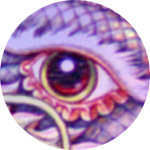keeping with the shaolin forms history theme we've had as of late, i'd like to discuss the history and development of these two sets:
1. 七星拳 "qixingquan" (eng.: seven star boxing)
2. 长护心意门拳 "changhuxinyimenquan" (eng.: constant protection of the mind-gate boxing)
they are called "mother and son" sets, just as xiaohongquan and its matching dahongquan set. however, as we have determined most of the shaolin material evolved from rouquan and emperor zhao kuangyin's hongquan sets, i thought it would be interesting to discuss the origin of these two sets which seem to have a very interesting and unique style of their own.
changhuxinyimen is said to have been created by song dynasty monk huiwei, then altered in the yuan dynasty by jinnaluo, and in the ming dynasty by juexun, tongxiang and other warrior monks.
so any discussion on the origin of the sets, history of the creator and contributors, or the significance of their names, the style, etc. is welcome. i'd like to learn more about them if anyone has anything.



 Reply With Quote
Reply With Quote




